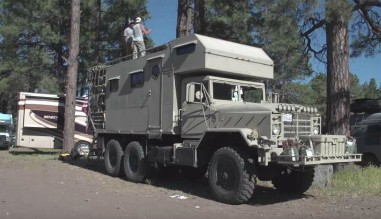
Being successful at prepping is a lot more difficult than most people think. In fact, the failure rate for fully 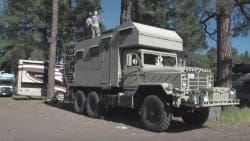 prepared survivalists is pretty high on a deployment level. This is nothing to be ashamed about, because nobody ever said that life itself was going to be easy. Prepping effectively just adds extra stresses and budgetary restraints to everyday life survival. For sure there is nothing new about that.
prepared survivalists is pretty high on a deployment level. This is nothing to be ashamed about, because nobody ever said that life itself was going to be easy. Prepping effectively just adds extra stresses and budgetary restraints to everyday life survival. For sure there is nothing new about that.
By Dr. John J. Woods, a contributing author to SHTFBlog & Survival Cache
However, if you elect to strike upon the path to preparing for disasters and SHTFs at any level, there are some tasks that must be accomplished to be reasonably ready for any threat. As you begin the process, here are ten areas of concern that could very easily bog you down. You need to know these up front to fully accept the challenge of prepping.
1. Failure to Prep
Remember Harvey, Irma, and Nate? Nice sounding group, like people you might have over for a backyard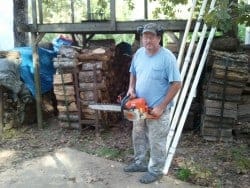 BBQ. Except these were hurricanes that disrupted the lives of tens of thousands of residents. Remember the clogged highways of escapees, and what happened to those unwilling to evacuate? Some of them are dead. Why? Because they were ill prepared to weather a storm or have sense enough to heed the advice to leave the area.
BBQ. Except these were hurricanes that disrupted the lives of tens of thousands of residents. Remember the clogged highways of escapees, and what happened to those unwilling to evacuate? Some of them are dead. Why? Because they were ill prepared to weather a storm or have sense enough to heed the advice to leave the area.
You cannot reasonably expect to withstand a storm or any SHTF unless you have prepared to do so. That means a commitment to prepping at a most basic level. If you sit on the fence forever, you are likely to die there. So, if you never elect to begin the process, you are a failure to start with. But, of course, that can be easily reversed by stepping up to the plate.
2. Fail to Plan
Ok, you bit the bullet, but not all the way through. In your mind, you wanted to start a prepping process for you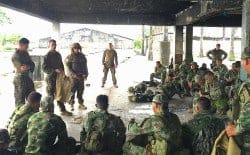 and your family, but so far, nothing has happened. Like a diet or exercise (tell me about it) following through can be the tough part just to jump off center.
and your family, but so far, nothing has happened. Like a diet or exercise (tell me about it) following through can be the tough part just to jump off center.
Prep planning is really quite simple and indeed can be a fun and challenging trial. First, buy a basic how-to book. Pick a basic one that would seem to cover all the basic bases. It might take a couple volumes or more. These works will get you to thinking about all the steps involved in prepping for a bug in or out, or other SHTF scenarios.
Naturally continue to read the article posts here at SurvivalCache.com and our sister site at SHTFBlog.com. There is a wealth of common sense advice here at both the elementary and advanced levels. Check out the sidebars, too for supplies and gear to purchase at Forge Survival Supply.
Start a prepping notebook. Build sections or folders containing ideas, plans, do-lists, gear needs, supply needs, and everything else. This notebook should become your prepper’s owner’s manual. Prepping is a lifelong process, so kick start that baby now.
3. Fail to Supply
Many wannabe preppers I have advised simply fail to initiate the process by stocking up on all the essentials they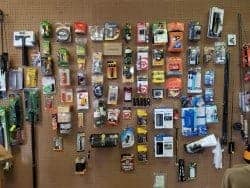 will need to survive a SHTF. Be it a hurricane, flood, wildfire, tornado, civil unrest, or economic collapse, it is going to take supplies of every description to withstand the downfall. This may be for 72 hours or 72 days or more. Who knows?
will need to survive a SHTF. Be it a hurricane, flood, wildfire, tornado, civil unrest, or economic collapse, it is going to take supplies of every description to withstand the downfall. This may be for 72 hours or 72 days or more. Who knows?
Again, build your needs lists and little by little as you can afford it, start to create a survival cache of supplies to hold you over. Go for water, food, medical, and security core supplies. Collect them, rotate them by use, and be ready.
4. Fail to Gear Up
Just as with the life supplies mentioned above, there will be a number of vital hardware items needed too. This 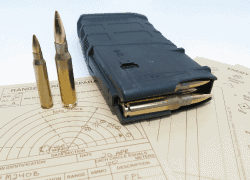 might be a chainsaw to remove downed trees or limbs after a storm in order to get down the driveway. It might be gardening tools and supplies to plant your own food producing garden. It could be installing and maintaining a hand pump water well in the backyard. It could be something as simple as a couple fire extinguishers in the house or shop.
might be a chainsaw to remove downed trees or limbs after a storm in order to get down the driveway. It might be gardening tools and supplies to plant your own food producing garden. It could be installing and maintaining a hand pump water well in the backyard. It could be something as simple as a couple fire extinguishers in the house or shop.
You may need all kinds of mechanical tools to fix stuff. This includes typical mechanics tools from screwdrivers to wrenches. You may need carpentry tools to build things or repair stuff around the homestead. You may need at least one gas powered electric generator to run drills or saws.
Gearing up can be a slow process and an expensive one. All your tool acquisitions do not have to be new ones. Think about garage and yard sales, pawn shops, and other ways to pick up some items without having to pay retail prices. Take small bites on this one, but keep eating away at the lists.
5. Failure to Become Weaponized
Shocking to some but not others, the idea of buying guns, having guns, and using guns is not particularly 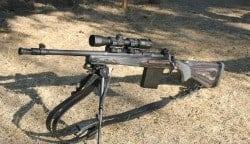 comfortable, especially if you were not raised up around them. For others, they often make the mistake of too much emphasis on guns and ammo to the neglect of other critical aspects of prepper survival.
comfortable, especially if you were not raised up around them. For others, they often make the mistake of too much emphasis on guns and ammo to the neglect of other critical aspects of prepper survival.
Push comes to shove you cannot eat a gun. Unless you intend to turn rogue and take supplies from others, survival weapons are primarily intended for defense measures. You want to be able to protect yourself and your family from external threats to your life. This requires more than a Bible and a pitch fork. It takes a gun.
Do some reading, ask around, visit some gun shops or gun shows, and shooting ranges. Do a lot of research and don’t get talked into anything. To start all you will need is a basic handgun, revolver or pistol, a good 12-gauge (or 20) shotgun, and a defensive rifle. The later can be the last to acquire if funding is tight. There are entire books on this subject so buy one, even my own, Basic Prepping Essentials-Weapons to start out.
6. Failure to Assess Threats
This is a public awareness aspect and the initiative to stay tuned into the world around you. This includes across  the street, in the neighborhood and town where you live as well as the state. It also means our country and the world. Include in this regular daily monitoring of the local, regional, and national news and weather. Know what is happening around you and you are more likely to be ready for anything.
the street, in the neighborhood and town where you live as well as the state. It also means our country and the world. Include in this regular daily monitoring of the local, regional, and national news and weather. Know what is happening around you and you are more likely to be ready for anything.
7. Failure to Train
This not only or just includes the security aspects of self-protection, but learning to do all the tasks required to survive. For sure learn to handle, shoot and maintain your stash of firearms, but how to hunt and clean wild game. Know how to start a fire under all kinds of circumstances. Learn to cook over an open campfire and to set up an emergency camp.
Most of us preppers fall very short in this area. We have a lot of stuff, but can we use it all and under the stress of an emergency? You better know. Sign up for training programs in all sorts of areas like carpentry, auto mechanics, small engine repair, plumbing, sewing, gardening, hiking, camping, shooting, and much more. Don’t forget first aid and medical skills training, too.
8. Fail to Map a Bug Out
If a hurricane is 48 hours out from your location, do you have the faintest idea where to go? Do you know the  many viable escape routes and have you traveled them just to inspect the availability of services, and supplies along the way? Have you identified the gas stations, hospitals, police stations, grocery stores, camping areas or hotels? You best know, and have alternatives mapped out as well. Then take weekend trial runs to check them out. Are your Bug Out bags packed and ready to go at a minute’s notice?
many viable escape routes and have you traveled them just to inspect the availability of services, and supplies along the way? Have you identified the gas stations, hospitals, police stations, grocery stores, camping areas or hotels? You best know, and have alternatives mapped out as well. Then take weekend trial runs to check them out. Are your Bug Out bags packed and ready to go at a minute’s notice?
9. Failing to Practice
Practice is different from training. First you learn how to do something correctly, then you put it into use by continuing to practice the skills on a regular basis. If you took a golfing lesson then never played golf again, what good did it do? The same with any other skill you acquire from shooting to running a table saw, or operating a welding machine.
10. Failure to Secure a Bug In
While a lot of preppers gear their planning toward an escape, which is 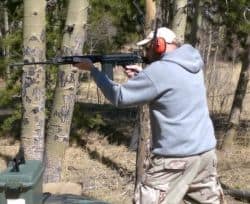 prudent, don’t forget the Bug In option. It may become your only option, or indeed the best one available. For us senior preppers, a Bug In may be the only serious option, but we have to recognize the possibility that we may be forced to leave as well. But for now, our home is our fort.
prudent, don’t forget the Bug In option. It may become your only option, or indeed the best one available. For us senior preppers, a Bug In may be the only serious option, but we have to recognize the possibility that we may be forced to leave as well. But for now, our home is our fort.
A Bug In requires additional work on security and lock down measures to withstand a strong storm or an assault threat if it comes to that. Contingencies have to be in place for water supplies to drink, cook, and for plumbing. An auxiliary power generator may be needed. Partnering with neighbors might be an option, too, but all that has to be worked out in advance.
While the thought of failure at anything is not a pleasant idea, without proper planning and initiative to supply, gear up, train and practice, it is a serious factor of reality to consider. But, it does not have to be. The secret is to get engaged as soon as possible and keep grinding away at your plan and readiness.

from SurvivalCache https://survivalcache.com/top-10-common-prepper-fails/

 have ever totally consumed skunk, and I mean, not just one bite, but the whole animal! And while we’ve only just eaten the one, we may be considered experts because near as I can tell, there is no other living proof documented of the total edibility of skunk, and how to prepare it for a meal, anywhere! While some historical records from the 1800’s mention skunk in cursory manner, none go into enough detail to properly perform the skinning operation successfully.
have ever totally consumed skunk, and I mean, not just one bite, but the whole animal! And while we’ve only just eaten the one, we may be considered experts because near as I can tell, there is no other living proof documented of the total edibility of skunk, and how to prepare it for a meal, anywhere! While some historical records from the 1800’s mention skunk in cursory manner, none go into enough detail to properly perform the skinning operation successfully. bother with a skunk, and it’s a fair question. The simplest answer that I can provide is that in an SHTF scenario, skunk might be one of those few species that remains untargeted, leaving those of us with iron stomachs free reign. In fact, skunks have very few natural predators, and for good reason – they are generally considered unpalatable to anyone unskilled and patient enough to correctly wield a sharp implement to diffuse natures original scent bomb.
bother with a skunk, and it’s a fair question. The simplest answer that I can provide is that in an SHTF scenario, skunk might be one of those few species that remains untargeted, leaving those of us with iron stomachs free reign. In fact, skunks have very few natural predators, and for good reason – they are generally considered unpalatable to anyone unskilled and patient enough to correctly wield a sharp implement to diffuse natures original scent bomb. may spray and render the operation a failure. You really don’t want them to spray. If you get a docile member of the species, you can sometimes approach with a blanket held in front to conceal your silhouette, move slowly, and cover for transportation. After the animal is dispatched, clean it well. Wash with warm soapy water with rubber gloves, paying attention to the crevices and anal region.
may spray and render the operation a failure. You really don’t want them to spray. If you get a docile member of the species, you can sometimes approach with a blanket held in front to conceal your silhouette, move slowly, and cover for transportation. After the animal is dispatched, clean it well. Wash with warm soapy water with rubber gloves, paying attention to the crevices and anal region. that no liquid is spilled (this is much easier to demonstrate rather than explain so be sure to watch the accompanying video). Be careful not to play around with any of the tissues around the anus anymore than necessary as spilled liquid will end up on the meat giving it that distasteful flavor we associate with skunk – burnt tire and garlic. You’ll get immediate feedback on this as the more you move the tissues, the more smell is released.
that no liquid is spilled (this is much easier to demonstrate rather than explain so be sure to watch the accompanying video). Be careful not to play around with any of the tissues around the anus anymore than necessary as spilled liquid will end up on the meat giving it that distasteful flavor we associate with skunk – burnt tire and garlic. You’ll get immediate feedback on this as the more you move the tissues, the more smell is released. think you are home free now, but there’s more. Carefully inspect for any fat tissues that may conceal other scent glands. We found some in the pits of the legs, around the neck and various other locations. These look like small light colored beans. Remove all of these or you may end up with more off flavors. If you’ve deglanded raccoon before, you know how to do this already.
think you are home free now, but there’s more. Carefully inspect for any fat tissues that may conceal other scent glands. We found some in the pits of the legs, around the neck and various other locations. These look like small light colored beans. Remove all of these or you may end up with more off flavors. If you’ve deglanded raccoon before, you know how to do this already.
 prepared
prepared  BBQ. Except these were hurricanes that disrupted the lives of tens of thousands of residents. Remember the clogged highways of escapees, and what happened to those unwilling to evacuate? Some of them are dead. Why? Because they were ill prepared to weather a storm or have sense enough to heed the advice to leave the area.
BBQ. Except these were hurricanes that disrupted the lives of tens of thousands of residents. Remember the clogged highways of escapees, and what happened to those unwilling to evacuate? Some of them are dead. Why? Because they were ill prepared to weather a storm or have sense enough to heed the advice to leave the area. and your family, but so far, nothing has happened. Like a diet or exercise (tell me about it) following through can be the tough part just to jump off center.
and your family, but so far, nothing has happened. Like a diet or exercise (tell me about it) following through can be the tough part just to jump off center. will need to survive a SHTF. Be it a hurricane, flood, wildfire, tornado, civil unrest, or economic collapse, it is going to take supplies of every description to withstand the downfall. This may be for 72 hours or 72 days or more. Who knows?
will need to survive a SHTF. Be it a hurricane, flood, wildfire, tornado, civil unrest, or economic collapse, it is going to take supplies of every description to withstand the downfall. This may be for 72 hours or 72 days or more. Who knows? might be a chainsaw to remove downed trees or limbs after a storm in order to get down the driveway. It might be gardening tools and supplies to plant your own food producing garden. It could be installing and maintaining a hand pump water well in the backyard. It could be something as simple as a couple fire extinguishers in the house or shop.
might be a chainsaw to remove downed trees or limbs after a storm in order to get down the driveway. It might be gardening tools and supplies to plant your own food producing garden. It could be installing and maintaining a hand pump water well in the backyard. It could be something as simple as a couple fire extinguishers in the house or shop. comfortable, especially if you were not raised up around them. For others, they often make the mistake of too much emphasis on guns and ammo to the neglect of other critical aspects of prepper survival.
comfortable, especially if you were not raised up around them. For others, they often make the mistake of too much emphasis on guns and ammo to the neglect of other critical aspects of prepper survival. the street, in the neighborhood and town where you live as well as the state. It also means our country and the world. Include in this regular daily monitoring of the local, regional, and national news and weather. Know what is happening around you and you are more likely to be ready for anything.
the street, in the neighborhood and town where you live as well as the state. It also means our country and the world. Include in this regular daily monitoring of the local, regional, and national news and weather. Know what is happening around you and you are more likely to be ready for anything. many viable escape routes and have you traveled them just to inspect the availability of services, and supplies along the way? Have you identified the gas stations, hospitals, police stations, grocery stores, camping areas or hotels? You best know, and have alternatives mapped out as well. Then take weekend trial runs to check them out. Are your Bug Out bags packed and ready to go at a minute’s notice?
many viable escape routes and have you traveled them just to inspect the availability of services, and supplies along the way? Have you identified the gas stations, hospitals, police stations, grocery stores, camping areas or hotels? You best know, and have alternatives mapped out as well. Then take weekend trial runs to check them out. Are your Bug Out bags packed and ready to go at a minute’s notice? prudent, don’t forget the Bug In option. It may become your only option, or indeed the best one available. For us senior preppers, a Bug In may be the only serious option, but we have to recognize the possibility that we may be forced to leave as well. But for now, our home is our fort.
prudent, don’t forget the Bug In option. It may become your only option, or indeed the best one available. For us senior preppers, a Bug In may be the only serious option, but we have to recognize the possibility that we may be forced to leave as well. But for now, our home is our fort.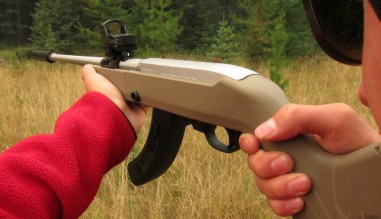
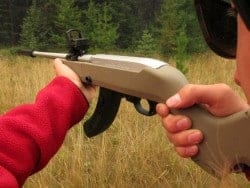 distorted understanding of guns, shooting, and expectations of a bullet; all a good thing in my survival book. As long as potential adversaries are living in a fantasy world, there is a direct and severe survival advantage to a confrontation where Hollywood’s magic has taken its toll.
distorted understanding of guns, shooting, and expectations of a bullet; all a good thing in my survival book. As long as potential adversaries are living in a fantasy world, there is a direct and severe survival advantage to a confrontation where Hollywood’s magic has taken its toll.  And second is the ease at which one can hit a target with a moment or two of actual aiming. Especially moving targets. Aiming a gun takes practice and is a perishable skill so knocking a few cans off a fence post twenty years ago is not of much comfort today. But the opposite is true. Even a little occasional practice can keep your shots in the center of mass rather than in the ceiling.
And second is the ease at which one can hit a target with a moment or two of actual aiming. Especially moving targets. Aiming a gun takes practice and is a perishable skill so knocking a few cans off a fence post twenty years ago is not of much comfort today. But the opposite is true. Even a little occasional practice can keep your shots in the center of mass rather than in the ceiling. some truth to the accuracy outcomes of spray-and-pray, but the statistics of sustained auto fire in general directions lean heavily towards something bad happening. The happy takeaway here is that the uninitiated might suspect a positive outcome when hiding behind a telephone pole waiting for your reload.
some truth to the accuracy outcomes of spray-and-pray, but the statistics of sustained auto fire in general directions lean heavily towards something bad happening. The happy takeaway here is that the uninitiated might suspect a positive outcome when hiding behind a telephone pole waiting for your reload.
